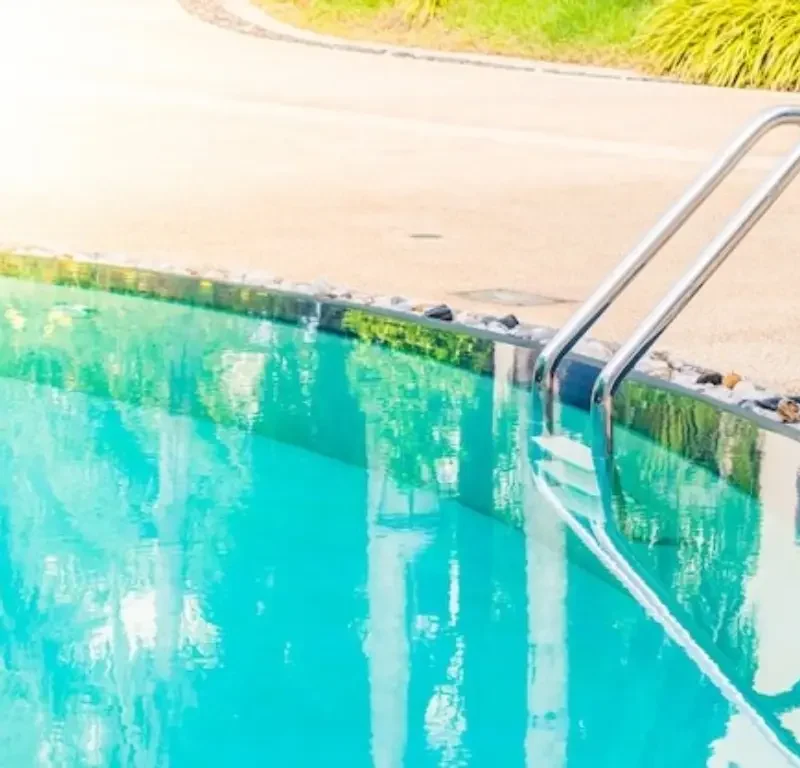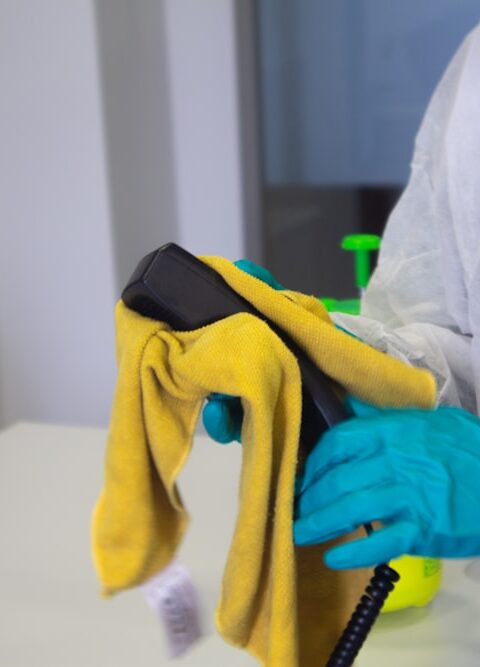A cloudy pool can quickly turn your backyard oasis into an uninviting mess. Plans to spend a refreshing summer day splashing in cool water are ruined, and now you have to figure out what happened and how to fix the issue. The good news is that you can clear a cloudy pool yourself or call in professional pool builders to handle it. This guide discusses everything you need to know about a cloudy pool.
What does cloudy pool water look like?
Cloudy pool water appears milky or murky. However, the milky appearance varies depending on the level of bacteria. It starts as hazy pool water—the water looks slightly dull, but you can still see the bottom.
As the issue worsens, the water becomes milky, reducing visibility. The pool is opaque in severe cases, and you can’t see the bottom. This level of cloudiness indicates significant water quality issues that need immediate attention.
Is cloudy pool water dangerous?
Yes, cloudy pool water is dangerous. According to the CDC, cloudy pool water indicates more germs than normal. It can contain harmful bacteria such as Legionella and E. coli, which are known to cause stomach issues and a urinary tract infection (UTI). The contaminants and imbalanced chemical levels can also cause eye and skin irritation.
Moreover, there’s also a safety concern. It’s difficult to see swimmers in distress at the bottom of a cloudy swimming pool. This is particularly dangerous because most drowning cases happen quietly without splashing. Someone can drown unnoticed.
What are the most common causes of cloudy pool water?
A milky or hazy look on your pool indicates some imbalance in the water, but the exact cause of the issue requires some investigation. Here are the five most common causes of cloudy pool water.
Filter issues
One of the most common cloudy pool water causes is clogged or malfunctioning filters. If the filter isn’t working efficiently, it can’t remove particles that cloud the water.
Chemical imbalances
A cloudy swimming pool can result from incorrect chlorine levels, pH or alkalinity levels. Low chlorine levels allow bacteria and algae to grow, leading to cloudy water. Furthermore, when chlorine combines with contaminants like sweat, body oils and urine, it forms chloramine, which can cause cloudiness and irritation. Regularly test free chlorine levels and chloramines.
The ideal range for free chlorine is two to four ppm and zero chloramines. Higher pH causes calcium and other minerals to precipitate, while low pH can lead to corrosion of metal parts. Both lead to the murky pool water. Ideal pool pH should be between 7.4 and 7.6 and alkalinity levels between 80 and 120 ppm.
Algae growth
When pool water isn’t properly sanitized and filtered, algae can easily thrive and multiply, causing cloudy pool water.
Debris and particulates
Pollen, leaves, dust and other debris can accumulate in the pool. If not properly filtered or cleaned, they’ll cloud the water.
High calcium hardness
Increased calcium levels can cause particles to precipitate out of the water, resulting in a cloudy pool.
What is the best way to clear a cloudy pool?
The most effective cloudy pool water treatment depends on the cause of the problem. Here are some of the best ways to resolve this issue.
- Chemical adjustment: Conduct a cloudy pool water test to check chlorine, pH and alkalinity levels. If that’s the problem, balance the chemicals accordingly.
- Improve filtration: Clean or replace the pool filter if it’s clogged. Running the filter longer can also help clear the water. However, ensure you monitor pressure levels to avoid unnecessary strain on the system.
- Shock the pool: If the cause of the cloudiness is algae, you’ll have to shock the pool. First, brush the algae off the pool walls and floor with a pool brush. Then, shock the pool following the manufacturer’s instructions based on your pool size.
- Use a pool clarifier or flocculant: Clarifiers bind small particles so the filter can catch them, while flocculants cause particles to sink, allowing for easier vacuuming.
- Regular maintenance: Consistently skim debris, brush pool walls and vacuum the floor to prevent cloudy pool water from developing.
Final thought
Cloudy pool water poses health and safety concerns, so you should not swim in it. Instead, ensure you investigate as soon as possible to understand and fix what is causing the problem. If you are unable to do it yourself, contact professional pool builders for help.







